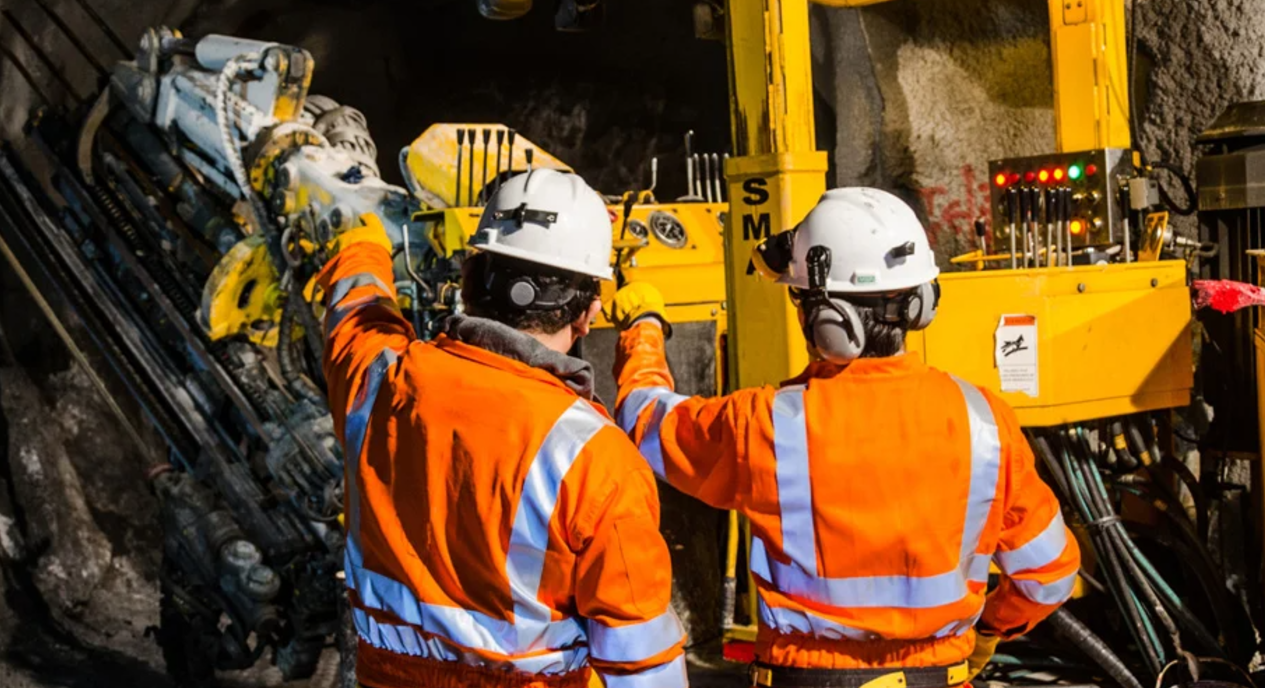

Numerous industries have seen a revolution thanks to acoustic imaging technology. It provides a new approach to sound analysis by accurately visualizing sound sources. This improves dependability, assures safety, and substantially contributes to industrial maintenance. In this post, we will look at the principles of acoustic imaging in mining operations and its advantages.
The industrial machinery, tools, and other procedures found on mining sites can be overwhelming. They require a great deal of energy, people, timing, and precision to achieve the desired outcomes.
Compressed air is a crucial part of the whole operation. Air compressors facilitate a variety of purposes, including powering machinery, supplying clean air, and providing ventilation to make processes safer and more effective.
In addition to making mining safer and more effective, compressed air systems are the industry’s preferred method since they are convenient and flexible. They do well in various mining operations and are resilient to severe wear and tear.
Today, between 10% and 20% of a mine’s electricity comes from compressed air generation. However, over time, leaks in compressed air systems can raise energy costs by making the compressor work harder. Joints, weak spots, and pressure level changes are common places where leaks develop. These issues can decrease the effectiveness of air-operated tools and lengthen the time needed to do tasks.
Additionally, leaks degrade the equipment’s service life and raise maintenance expenses. They increase the compressor’s operating time and cause needless cycles. Associated expenses can quickly increase: detecting compressed air leakage can save 2.3% to 5% of the mine’s overall energy costs.
Acoustic imaging has the potential to revolutionize leak detection. Among its many advantages are its versatility, speed, accuracy, safety, non-invasiveness, and ability to maintain operations.
A mining extraction camera uses an acoustic array of tiny, extremely sensitive microphones that can pick up both sonic and ultrasonic sound waves. After identifying a sound source at a possible leak location, the acoustic imager uses proprietary algorithms to interpret the sound as a leak. The outcome is a color map that is placed on the visible light image, indicating the precise location of the leak.
When paired with cloud service connectivity, the integrated system immediately saves photos to the cloud as soon as they are taken. An operator and team can then access saved files, separating sound sources for more in-depth problem classification and analysis.
The ability of a mining camera to precisely transform sound waves into visual information is exceptional. There are numerous crucial steps in the process:
Even in highly complicated and noisy locations, acoustic mining cameras have the benefit of quickly and accurately locating the source of a leak with little operator training. The operator just needs to aim the camera at potentially leaking pipes, equipment, and lines and point and shoot. As a result, mining facilities are able to act quickly to reduce energy waste, reduce safety hazards, and improve equipment performance.
Compressed air leaks are a major source of energy waste in the mining sector. However, miners employ acoustic imaging cameras to promptly identify and repair leaks. This can increase their energy efficiency and lower overall energy usage. Consequently, it lowers operational expenses and the impact on the environment.
Acoustic imaging makes it possible to identify problems like leaks or mechanical wear early on. This ability is essential for avoiding production disruptions, reducing safety risks, and averting expensive malfunctions.
The fact that acoustic imaging doesn’t involve physical touch with equipment is a significant benefit. This non-intrusive approach decreases downtime during inspections and lowers the possibility of machinery damage.
Compressed air leaks hinder the effectiveness of pneumatic equipment. They can have a detrimental impact on mining operations’ production. Mining businesses can increase overall production and maximize equipment efficiency by promptly detecting and fixing these leaks using acoustic cameras.
Acoustic imagers provide detection in frequency bands from two to 100 kHz. On the contrary, airborne ultrasonic sensors only allow detection in a single frequency at a time (e.g., the 30-kHz range). Mining extraction cameras can also restrict the frequency bands they use if they so choose. Additional frequency bands offer the imager a greater range to detect abnormalities. This includes ones that might not be evident at 30 kHz and provide more data.
Acoustic imaging can be conducted safely away from moving mining equipment, inaccessible areas, and other hazardous situations. Up to 50 meters can be used for inspections, which makes the workplace safer.
Acoustic imaging detection does not require specialized knowledge or training. Compared to other inspection techniques, it is easier and faster to use. It has a user-friendly design and sound visualization. This saves time for both conducting the inspection and analyzing the findings.
Acoustic imaging can visually present anomalies and sound sources. This visual data allows maintenance crews, operators, and management to make better decisions and communicate more effectively.
Compressed air leaks can hinder the effectiveness of pneumatic equipment and negatively impact mining operations. This is where an acoustic imaging camera can really help. Mining businesses can improve overall production and equipment performance by quickly detecting and fixing such leaks.
In the modern business landscape, maintaining robust connectivity across devices and equipment provides invaluable visibility…
It is normal to think of dark web monitoring from the perspective of the company…
The Evolution of Inventory Tracking RFID inventory management software is transforming how businesses track, manage,…
The Unexpected Costs of Unprotected Windshields Polaris Ranger windshields protection is more than just a…
Probably one of the best things people do to secure their finances is the purchase…
The iPhone 15 is still a great buy Released in 2023, the iPhone 15 brought…